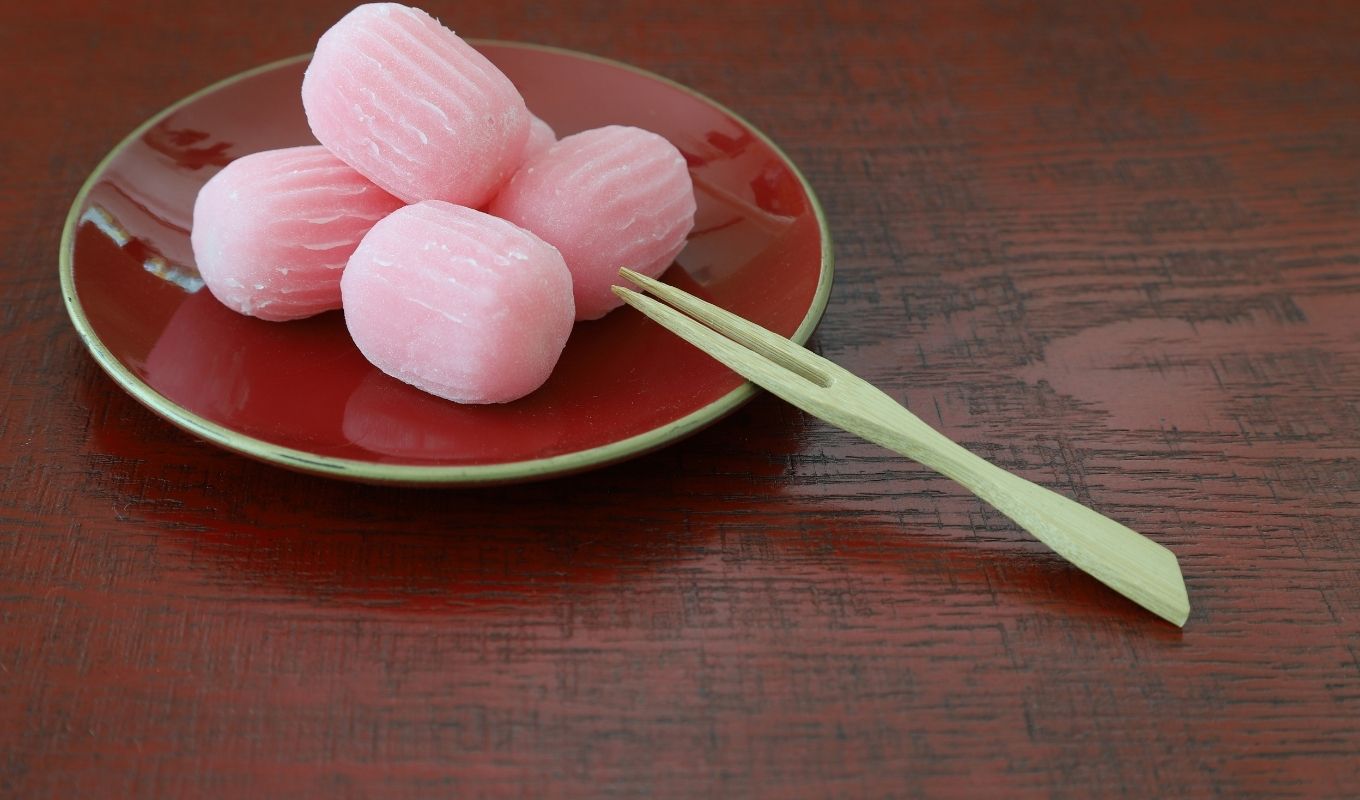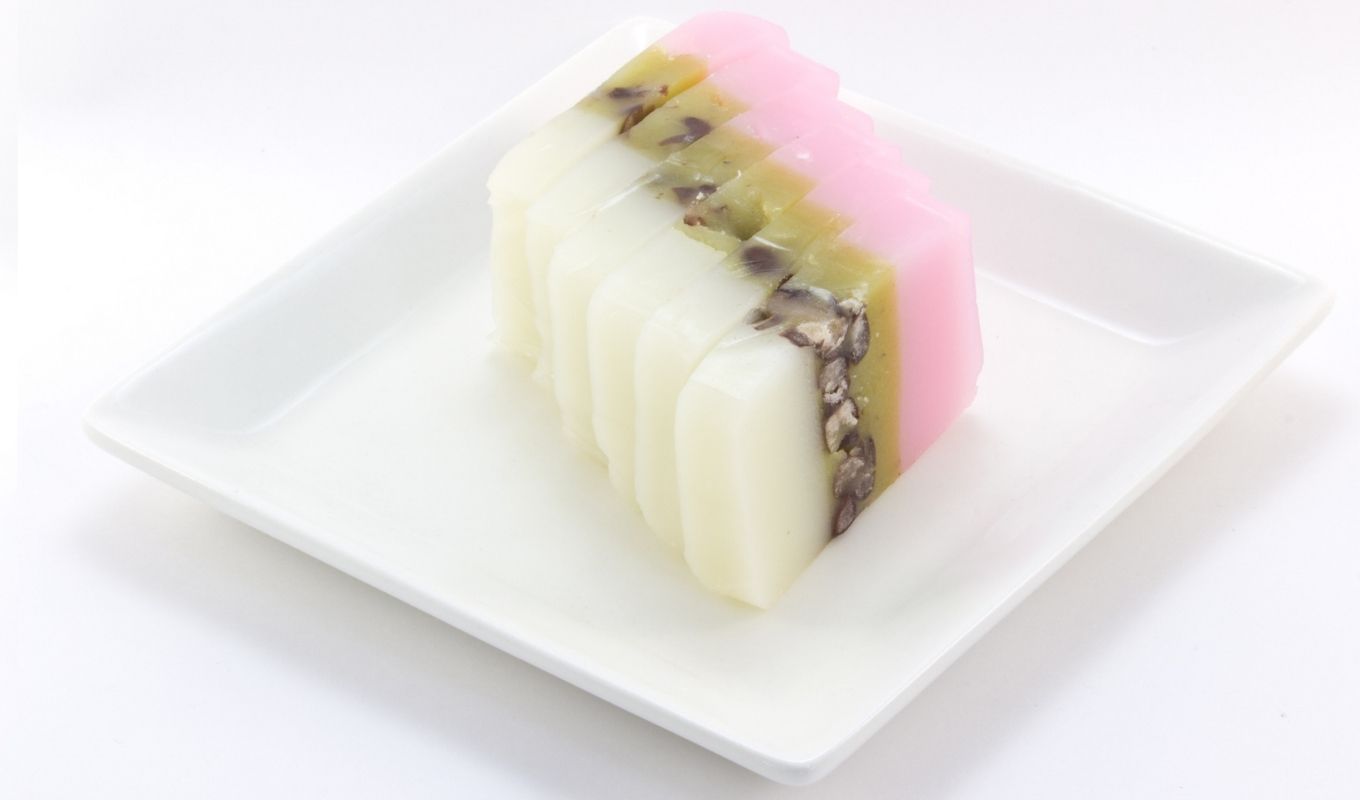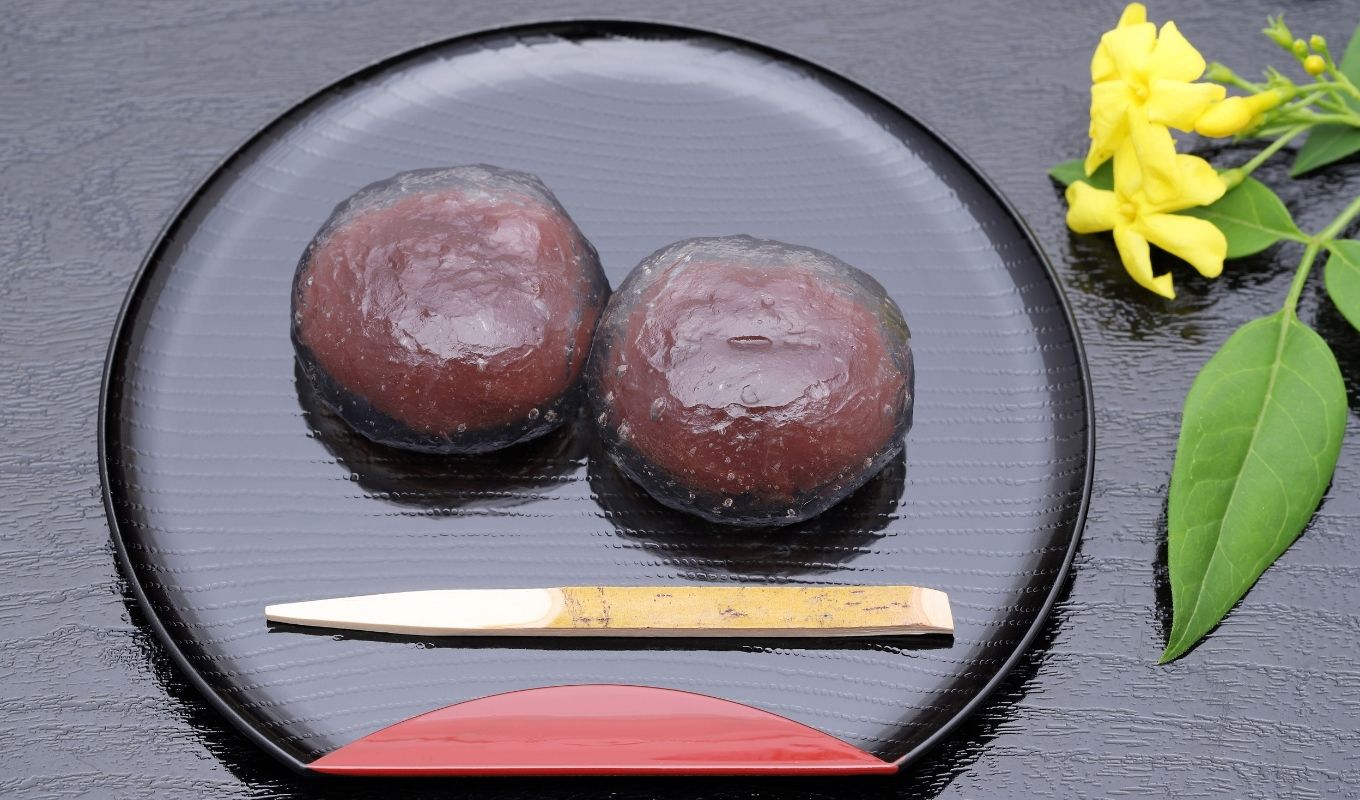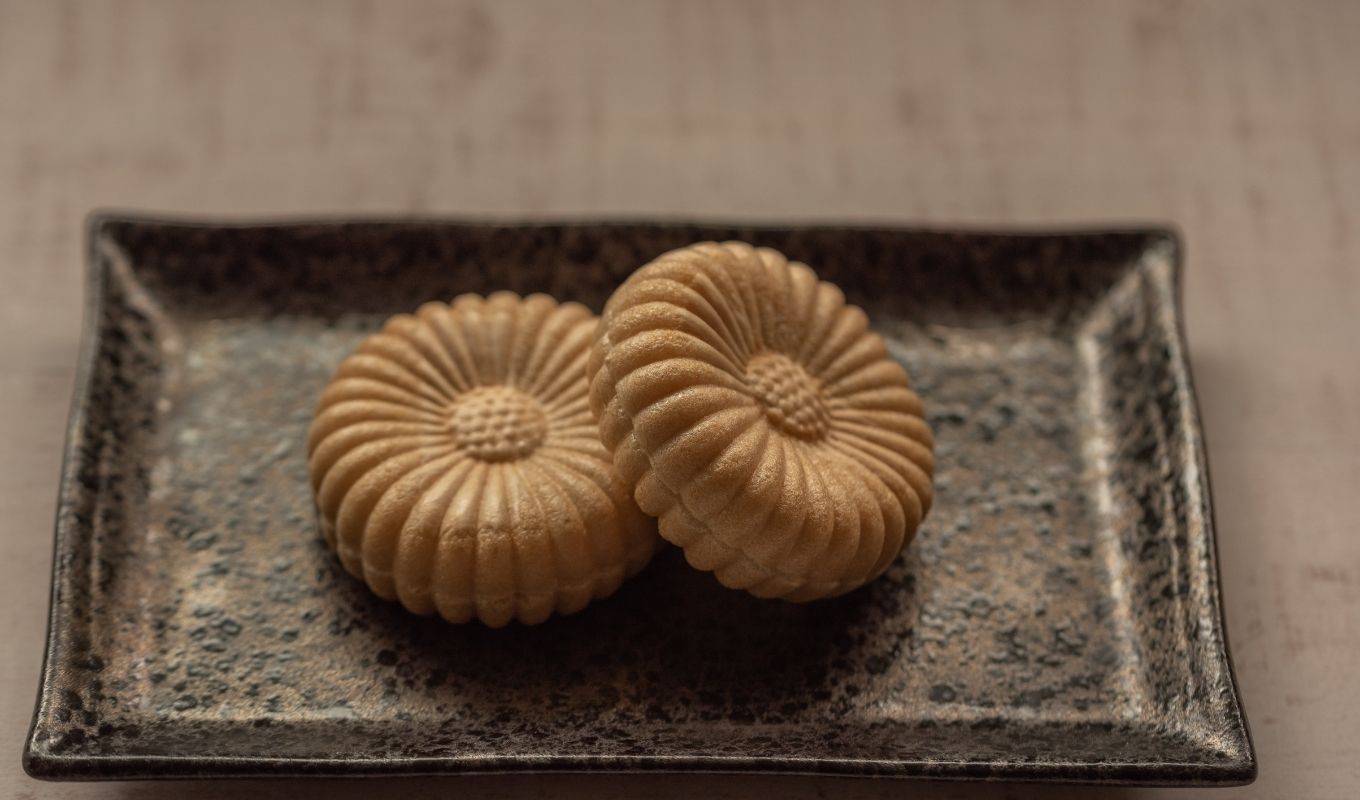These traditional Japanese desserts (Wagashi or Namagashi) can be found in shops specializing in sweets in Ginza Tokyo, or at the food basement of department stores.
Suama

Suama is a red/pink and white Japanese dessert made from rice flour and sugar. Red and white colors are the traditional Japanese celebration colors. Suama is shaped with a sushi rolling mat, which gives it a slightly bumpy texture.
Uiro

Uiro are steamed cakes made of rice flour and sugar. They have a sticky and chewy texture. They come in different flavors such as green tea (matcha), Azuki Beans, chestnut and strawberry. Uirō is subtly sweet.
Dango

Dango are Japanese dumplings served on sticks. Dango is made from rice flour and is served three or four on a skewer. There is a huge variety of Dango – some sweet coated in chestnut paste or made with red beans, others are covered with a syrup made from soy sauce.
Botamochi

A seasonal spring treat made from sweet rice and red bean paste.
Sakuramochi

Sakuramochi is a pink sweet Mochi (rice cake) filled with red bean paste and covered with a leaf of Sakura (cherry blossom). Sakuramochi is traditionally eaten during the Cherry Blossom Festival season, from late March to early May. The sakura leaf is edible. Sakura mochi is also eaten to celebrate girl’s day (Hinamatsuri) in Japan on March 3rd.
Konpeito

Konpeito are small colored sugar candies. The word “konpeitō” comes from the Portuguese word confeito, which is a type of sugar candy. Sugar was only introduced to Japan in the 16th century by the Portuguese.
In 1569 the Portuguese missionaries presented konpeitō to the Japanese in order to obtain permits to introduce Christianity to the Japanese people. For many years afterward sugar continued to be uncommon and costly in Japan. As konpeito uses a lot of sugar, it was very scarce and pricey too.
Yokan

Yokan is a thick jelly dessert sold in a block form and eaten in slices. It is made from red bean paste and sugar, green tea powder, chestnuts, and whole sweetened beans.
Daifuku

Daifuku in Japanese means “good luck”. Daifuku is a rice cake filled with sweet red azuki beans paste.
Daifuku comes in a few traditional colors: green (green tea flavored), pale pink (strawberry flavor) and white.
Manju

Manju are Japanese dessert dumplings made from rice flour and buckwheat and filled with anko (red azuki bean paste and sugar).
Taiyaki

Taiyaki in Japanese means “baked sea bream”. Taiyaki is a fish-shaped cake most commonly filled with sweetened azuki red bean paste. The Taiyaki is made using a waffle machine. The batter is poured into a fish-shaped mold and cooked until golden brown.
Kuzumochi

Kuzumochi is a Japanese Dessert made from a starch powder derived from the root of the kudzu plant.
Monaka

Monaka is a Sweet Japanese dessert made of azuki bean jam inside a crisp mochi wafer. The jam can be made from azuki beans or chestnuts, or sometimes ice cream.
Amanatto

Amanatto is made from beans (often azuki beans) simmered in sugar syrup and covered with refined sugar.
Amanatto is a very traditional Japanese sweet that was developed in the Edo period.
The Secret behind Japanese Desserts
Nothing can compare to Japanese desserts and sweets.
Sugar was only introduced to Japan in the 16th century by Portuguese traders. For many years afterward sugar continued to be rare and precious in Japan. That’s the reason Japanese sweets are typically just subtly sweet, and the sweetness is based on sweet plant ingredients like azuki bean paste, chestnut and rice flour.


